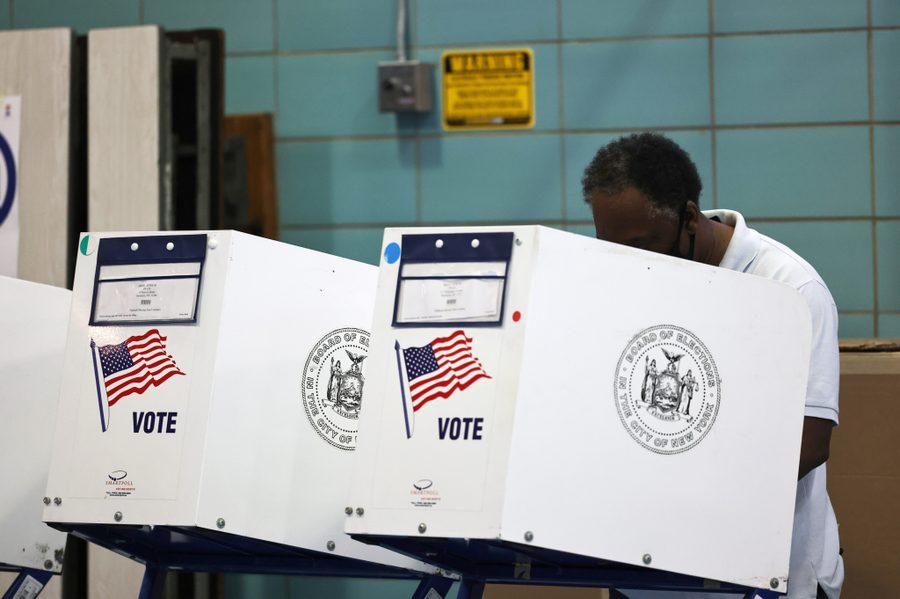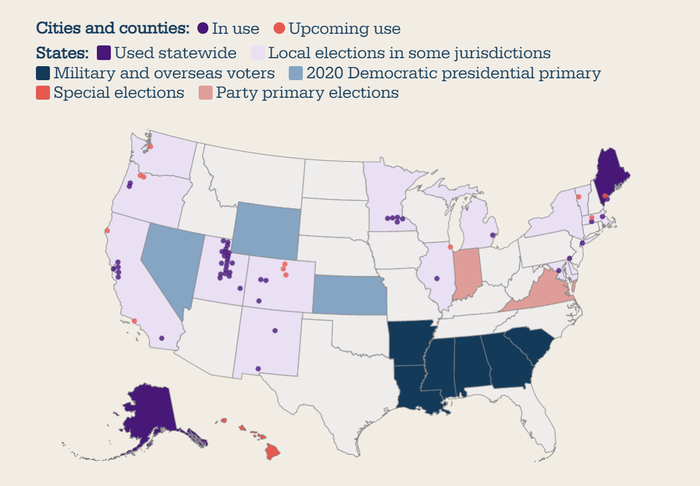Ranked Choice Voting Won the Midterms
More than 15 million people now have access to ranked elections, and that number is only growing
David Daley

We still don’t know how close House Democrats were to winning a majority, and the final margin in the U.S. Senate hangs on a December runoff in Georgia. We are bitterly divided — nearly split in seats in the House, Senate and governor’s mansions, with our parties like warring armies fighting trench warfare in a shrinking handful of battlegrounds. But the election produced two clear outcomes. Election deniers went down in flames in every close race, and ranked choice voting (RCV) stayed on its soaring upward trajectory.
Millions of people understandably are frustrated with the anti-majoritarian nature of our system. These days, it feels like a feature and not a bug. Since 1988, Republicans have won the most votes in a presidential election only once, yet served 16 years in the White House and appointed seven Supreme Court justices. By 2040, two-thirds of U.S. residents will live in just 15 states, but the Senate — and the filibuster — give older, rural, whiter states veto power over popular legislation. The combination has ended the right to reproductive freedom, with the U.S. Supreme Court governed by five justices appointed by presidents who lacked majority support, and confirmed by an unrepresentative Senate.
Yet it’s also easy to see hope and signs of democratic renewal. In cities and states nationwide, all varieties of red, blue and purple, people have come together behind reforms to improve democracy and show all of us a path forward. Perhaps no reform has more momentum behind it than RCV, which works like an instant runoff: When voters have more than two choices, they can rank their choices top to bottom. If no candidate wins 50% in the first round, the last place candidate is eliminated, and the second choices kick in. Even as voting rights have become a depressingly polarized topic in our current crisis of democracy, RCV has been increasing in popularity nationwide. For a growing number of people, voting now means ranking.
In 2016, only 10 cities used RCV. Now that number is well over 50, ranging from small towns in Utah and liberal cities like San Francisco and Minneapolis. In 2020, several states used RCV to select presidential candidates in primaries, and in recent years Virginia Republicans have used RCV to select their nominees for governor and candidates for the U.S. House. In recent years, Maine and Alaska adopted RCV, and last week, Nevada took a step toward joining them after voters passed a constitutional amendment instituting RCV in key state and national elections (a second vote in 2024 will be needed to seal the win). Seattle and Portland, Oregon, were among the seven new cities and local counties that adopted RCV on Election Day this year while Arlington, Virginia voted to adopt it by statute. More than 15 million people now live in cities, counties and states that regularly use ranked choice elections. One consistent theme: younger people across the political spectrum are most ready for RCV.

Grounded in a growing reform coalition of national and state groups, these wins are proof that voters everywhere want better elections with more meaningful choices: Surveys conducted after RCV elections show that voters find RCV elections easy and enjoy the additional voice and choice.
RCV requires politicians to talk to every voter, build coalitions and govern with everyone in mind. Perhaps the best recent example of how RCV can remake our politics for the better is the trailblazing win for Democrat Mary Peltola, who became the first Native Alaskan in Congress. Although Donald Trump won Alaska in a landslide and a conservative Republican governor easily won re-election, Peltola embraced RCV and built a remarkable coalition to twice defeat Sarah Palin, first in the special election to fill the term of the late Rep. Don Young’s, and then again in November for a full term of her own.
In party primaries, voters are often asked to choose between a dozen or more candidates; a vote in a field that large is a dart thrown in the dark. In presidential primaries, millions of voters cast a ballot early for a candidate who dropped out prior to Election Day; for them, RCV becomes an insurance policy against losing one’s voice altogether. When third parties join the general election fray, RCV allows voters to pick who they want while also ranking a major-party candidate 2nd or 3rd, and knowing that the winner will ultimately hold majority support.
Under the current status quo, 120 candidates advanced from plurality primaries for the U.S. Senate, House or statewide offices this year. Many then waltzed into office from safe or gerrymandered seats — representing everyone, even though some won low-turnout, base-driven primaries with as little as 20% of the vote. They had no incentive to talk to everyone in a campaign, and even less incentive to represent everyone once in office. Had RCV been used in these party primaries and general elections, it would have ensured that only those enjoying the widest and broadest support would win; it would no longer be possible for a candidate to “win” an election when a majority of voters preferred someone else. In these ways, RCV would address our anti-majoritarian problem while mitigating against extremism.
Last summer, RCV helped produce the most diverse city council in New York’s history: for the first time ever, a majority (31) of the body’s 51 members were women. The council, long a province of old-guard political elites, is now powered by new voices. Portland’s adoption of a new charter that includes RCV might prove similarly transformative. Voters replaced an antiquated city council — just five members, and all of them elected at large — with a larger body elected through the modern-day gold-standard of fair representation, combining new multi-seat districts and ranked choice voting to create an equitable form of proportional representation.
Experts have become increasingly convinced that this form of proportional ranked choice voting is the best way to ensure every voice is heard, not simply the loudest ones. It’s the foundation of the Fair Representation Act, which has been introduced in successive sessions of Congress by Rep. Don Beyer, which replaces single-member, winner-takes-all districts with larger, multi-member districts and candidates elected with RCV. It’s the clearest path toward a genuine multi-racial democracy and the best way to defeat the scourge of partisan and racial gerrymandering.
This summer, more than 200 scholars signed an open letter to Congress calling for this approach to be used in U.S. House elections. They urged leaders to “embrace this political richness by joining nearly every other advanced democracy in moving to more inclusive, multi-member districts made competitive and responsive by proportional representation.”
There’s no denying that this remains a perilous moment for U.S. democracy. But there’s also growing agreement that RCV and the Fair Representation Act provide the tools we need to truly achieve the promise of our democracy. As RCV’s usage continues to expand, it shows that even in polarized times, real change lies within our grasp.





